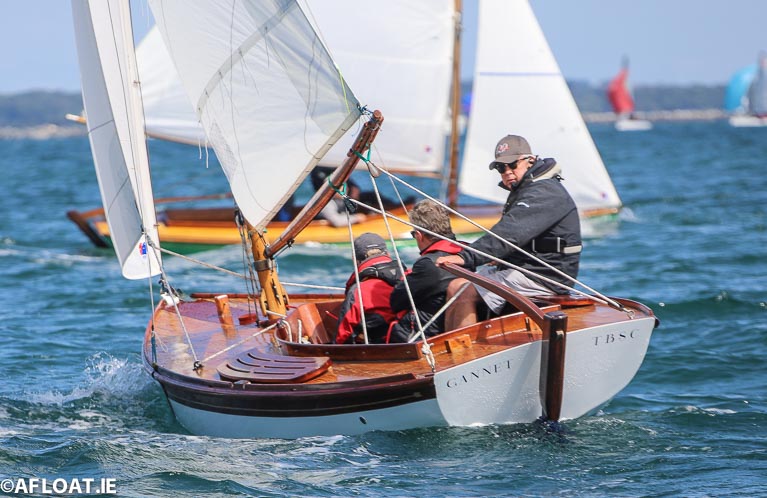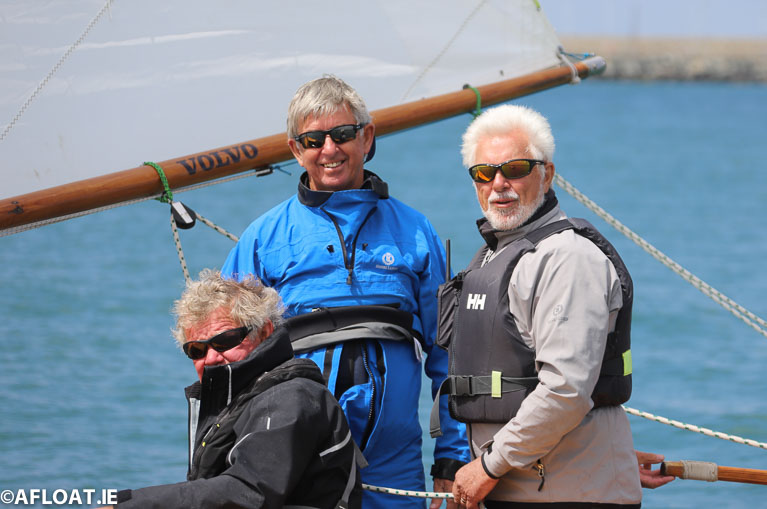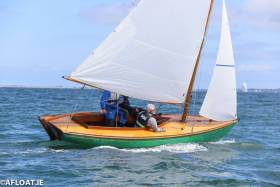Displaying items by tag: Seabird Half Raters
While the ancient Howth 17s may have started racing in 1898 a year earlier than the Seabird Half Raters on the other side of the Irish Sea, the Warden-Owen family of Treardur Bay reckon their Seabird class Scoter is all of 121 years old.
She was certainly far and away the oldest of the eight Seabirds which were brought across from Treardur Bay in Anglesey for Volvo Dun Laoghaire Regatta 2019. But age has not withered her. On the contrary, Scoter flew at speed like the duck she’s named after, and having achieved nine races, she was able to claim a clean sweep of wins after discarding a third from the first race.
 Jonty Straw’s Gannet (No 68) with overall winner Scoter crossing ahead of her. Photo: Afloat.ie/DavidO’Brien
Jonty Straw’s Gannet (No 68) with overall winner Scoter crossing ahead of her. Photo: Afloat.ie/DavidO’Brien
That third may have been the result of everything involved in her being in Dun Laoghaire at all, for co-owner Eddie Warden-Owen is CEO of the Royal Ocean Racing Club, and his week might have been a bit fraught through the fact that the ultra-calm conditions in the Atlantic had delayed finishers in the Transatlantic Race co-sponsored by the RORC and the New York Yacht Club.
But by Thursday the heavy metal had got to Cowes and an overall winner had been declared, and it was time for Eddie to have a bit of downtime racing Scoter with his brother David in Dublin Bay. And what better downtime is there than racing with your brother in the family’s long-loved boat against a group of friends you’ve known since Noah was a lad?
The best down time of all is doing a bit of quiet winning while you’re at it. Scoter (No 6) had herself a ball to win overall, second OA was Chris Neil with Harlequin (106) and third Tringa (76) Richard Nash.
 A man refreshed. Eddie Warden-Owen (centre) after a successful Volvo Dun Laoghaire regatta 2019 in the 121-year-old Scoter. Photo: Afloat.ie/David O’Brien
A man refreshed. Eddie Warden-Owen (centre) after a successful Volvo Dun Laoghaire regatta 2019 in the 121-year-old Scoter. Photo: Afloat.ie/David O’Brien























